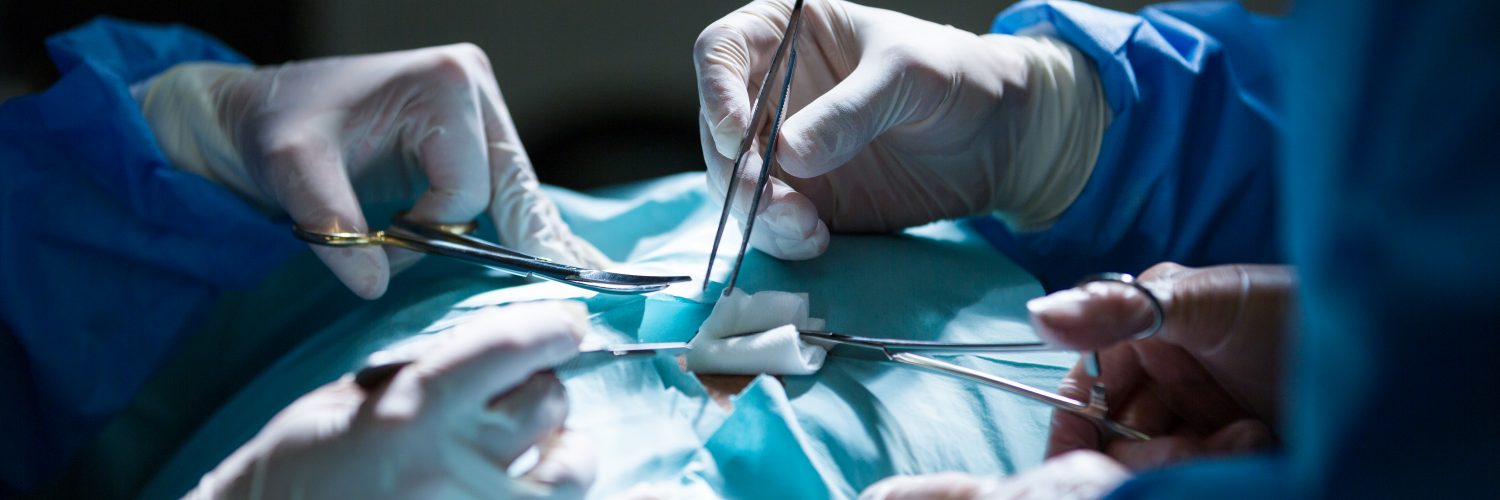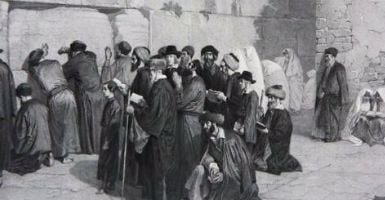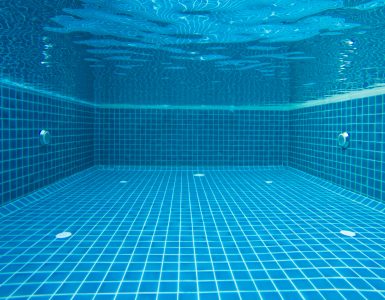Bereishit 5781
And Hashem formed the man of dust from the earth, and He blew into his nostrils the soul of life; and man became a living being. (Bereishis 7:2)
The bond between the body that is created from the “dust of the earth” and the soul blown into it by Hashem is not terminated cease when a person expires and his soul departs. After death, the human body retains its holiness and it is a Mitzva to uphold its honor. Chaza”l (Shabbos 152b) cite the Pasuk in Iyov (14) – “He feels only the pain of his flesh, and his soul will mourn over him” – as proof that the soul is distressed at the pain felt by the body after death. This is the basis for the consummate care that we afford to a Meis (dead body).
There is longstanding tension between Halacha and the world of medicine over cadaveric dissection. Dissection has been a cornerstone of medical education, research, forensic medicine, and other purposes, but has been a source of great controversy for centuries, particularly in Israel, even prior to the founding of the State. The debate, which is ongoing, could fill tens of books and thousands of articles.
In the following paragraphs we will focus on the study of anatomy and pathology through cadaveric dissection or examination of a cadaver that had been previously dissected, which is a critical component of medical education.
The Poskim who ruled on this matter noted that dissecting the dead body of Jewish person violates several Halachos (this is not a comprehensive list but it represents the major reasons for the Issur to dissect a Meis):
- Disgrace of the Dead: Disgracing a dead body is Assur Min haTorah – this is why the Torah forbids leaving a person who was hanged overnight without burial. It may also be a violation of v’Ahavta l’Rei’acha Kamocha.[1] Some say that dissecting a Meis is forbidden as it nullifies the Issur of leaving a dead body overnight without burial.[2]
- Abrogating the Mitzva of Burial: The Torah commands that we bury those people executed by Beis Din and hanged. Some say that this Mitzva applies to people who die in other ways too, but others hold that that is only a Mitzva d’Rabbanan.[3]
- Benefit from a Meis: Benefit from a dead body is Assur Min haTorah (Sanhedrin 46b, Rashi ad. loc. and Tosfos ibid. 48a).[4]
- Desecrating the Holiness of the Dead: After death and the departure of the soul, the body still retains its holiness and it is forbidden to violate it (Shu”t Da’as Kohen[5] 199).
The Noda b’Yehuda (Tinyana, Y.D. 210) discusses a case in which doctors wished to dissect a dead body in order to study the disease of “Choli ha’Even b’Kis” (bladder stones). There were several arguments put forth to permit it, each of which the Noda b’Yehuda dismissed.
It was argued that dissecting the Meis for the purposes of saving others is a source of honor for the dead, and comparable to the embalming of Yaakov and Yosef which was permitted due to the honor it afforded them. The Noda b’Yehuda retorted that dissection is inherently a disgrace of a body, whereas embalming is an honorable process.
He also discusses the Gemara in Bava Basra (155a) which recounts an episode in which R’ Akiva forbade people from inspecting a body to see if the deceased had become an adult before he died (which was necessary to resolve legal questions relating to the inheritance). The contention of the one who permitted the autopsy was that R’ Akiva only forbade it because it was for monetary purposes but had it been for the sake of Hatzalas Nefashos (namely, medical research), it would have been permitted.
The Noda b’Yehuda agreed that this Gemara could support the conclusion that dissecting the dead for Hatzalas Nefashos was justifiable, but argued strongly that this entire cause could not be described as Hatzalas Nefashos:
I have written all of the above in light of your position that this is a matter of Pikuach Nefesh. But I am astounded by that assertion, for if this would be considered even Safek Pikuach Nefesh, there would be no need for the entire discussion, for the Halacha is explicit that even a Safek Pikuach Nefesh overrides the stringent laws of Shabbos… And indeed that is where there is actual possibility of Pikuach Nefesh in front of us, such as a sick person or collapsed building [with people trapped beneath it]… and likewise, in the case of the Gemara in Bava Basra, the monetary issue was at least damaging to them at the time.
But in this case, there is no sick person who needs this [study of the dead body]. Rather, it is their desire to understand this matter, lest at some point a sick person will benefit from it. One cannot, on account of this slight possibility, override any Issurim of the Torah or even Issurei d’Rabbanan. For if one would call this Safeik Pikuach Nefesh, then all of the Melachos involved in Refua, such as grinding or cooking herbs or forming a knife for bloodletting, would always be permitted on Shabbos, lest today or tomorrow a sick person who needs it will present himself. And it is difficult to distinguish between concerns that are considered to be pressing and those that are non-urgent.
Therefore one absolutely cannot permit this – for even the doctors of the other nations do not dissect the dead unless the person had been executed or if he gave his permission before he died. If we, God forbid, are lenient in this matter, people will ultimately dissect every dead body in order to understand a body’s internal organs so as to practice Refua on the living.
Therefore, this lengthy discussion is ultimately redundant and there is absolutely no basis to permit this practice.
The Chasam Sofer (Y.D. 336) inferred from the Noda b’Yehuda that where there is a sick person present (“l’faneinu”) who would benefit from the dissection of a Meis to understand a particular disease, it would be permissible.
The Binyan Tzion (Shu”t 170-171) rules that if a person gives his consent for his body to be dissected after his death, it is permitted if it is done a for clear medical purpose. However, the Chasam Sofer argues at length that a person’s consent is of no value – he may not consent to the disgrace of his body.[6]
The Chazon Ish (Oholos 22:32) also discusses the Noda b’Yehuda and elaborates:
The Noda b’Yehuda and Chasam Sofer (cited by the Pischei Teshuva Y.D. 363:5) hold that if there is a sick person present [who could benefit from dissection of a Meis] it is permissible to disgrace a dead body due to Pikuach Nefesh. But if there is no sick person present, it is forbidden.
The actual distinction is not between a case when [a dangerously ill patient] is physically present or not, but if it is a common matter. For at a time when one sounds the Shofar [even when no sick person is present] on account of an epidemic, it is like a situation where enemies are besieging a border city (as the Gemara explains in Eruvin 45a and Ta’anis 21b).
However, in times of peace, it would not be considered Pikuach Nefesh, even though it is likely that this will be needed from time to time, just like it is forbidden to make weapons on Shabbos during times of peace, for if not, we would nullify all of the Mitzvos.
One does not consider matters of the future to be Safek Pikuach Nefesh if there are no concerns in the present. Frankly, we are not informed of matters of the future and often that which we presently believe will contribute to Hatzala, ultimately transpires to be an obstacle. Therefore, one does take matters of the distant future into account.
According to the Chazon Ish, the question of dissecting the dead does not depend on a specific case of Pikuach Nefesh “l’faneinu“ to contend with, but on the local conditions at that time. For example, if there is an epidemic raging, autopsy of a patient who died from the disease would be considered a matter of Pikuach Nefesh, and it would be permissible to dissect the body if it would help understand the disease and its possible treatment.
However, if autopsy would be solely for the purpose of research (e.g. to discover possible means of protection from a disease that has not yet broken out), it would be forbidden. If we were to permit this, we would eventually override all of the Mitzvos due to distant concerns of one kind or another. Furthermore, “we are not informed of matters of the future” and cannot know which things will transpire to be matters of Pikuach Nefesh at all and which steps will be effective in protecting and saving lives.
Rav Moshe Feinstein zt”l (Igros Moshe, Y.D. 2:151) reaches a similar conclusion to the Noda b’Yehuda though he notes that the Noda b’Yehuda’s reasoning is no longer applicable:
And I would add, that even if the concern [that the medical knowledge that could be gleaned from dissecting a Meis could be used to save a lives] is strong enough to justify overriding Issurim, it would still not override the Issur of dissecting a Meis. For there is no obligation to learn how to treat the sick. We do not find any obligation upon a person to learn medicine so that he may treat those who are presently sick or those who will be sick in the future. Though people are commonly sick and we must certainly take them into account, a person is still not obliged to study medicine, as the obligation that rests upon him is to save his fellowman in a manner that he is capable of. Therefore, if he is already a doctor, he is obligated to treat the sick. If he knows how to swim, he is obligated to jump into a river to save a person from drowning. But there is no obligation to learn how to swim or to practice medicine so that if the opportunity arises to rescue or treat somebody, he will be able to do so…. Likewise, regarding dissecting a Meis in order to study it for the purposes of Refua – a person has no obligation to do so, therefore it is forbidden due to the disgrace of the dead.
Therefore, although the reasoning of the Noda b’Yehuda that one may not override Issurim due to an unlikely concern that a sick person will present himself is problematic, for there are many sick people in the world – and particularly today where information from hospitals all over the world is available regarding patients suffering with this disease, and one can easily [disseminate] the results of the research that are gleaned from dissecting this Meis… Nevertheless it is forbidden for there is no obligation to study in order to heal the sick and therefore this is forbidden due to the disgrace of the dead.
This discussion is the basis of a fascinating Teshuva by haGaon Rav Asher Weiss Shlit”a regarding a dilemma faced by the Jewish community of Johannesburg. The authorities in South Africa had decided that the Hatzala organization could not receive a permit to operate unless they performed various services in local hospitals, which would necessitate Chilul Shabbos. The question was whether it was permitted for them to do so given that Jewish lives were likely to be endangered if there was not an active volunteer Hatzala corps in the community.
Rav Asher cited the aforementioned rulings of the Noda b’Yehuda and Chazon Ish, noting that the Chazon Ish essentially agreed with the Noda b’Yehuda, and only sought to clarify his position. Rav Asher also noted how the Chasam Sofer agreed with the Noda b’Yehuda’s conclusion as well. Therefore, one may only override Issurim where there is a state of Pikuach Nefesh present and not where it is only a distant concern.
He also pointed out that the need to ensure that Hatzala can operate in a community is different in a number of ways from cadaveric dissection for medical education or research. Firstly, medical research conducted on a Meis may not produce any results at all, whereas the establishment of Hatzala in a community will certainly be beneficial. Secondly, even if useful information is gleaned from dissecting a Meis, it may never be used to actually cure a Jewish patient, whereas Hatzala will certainly participate in saving Jewish lives. Thirdly, medical research does not necessarily need to be performed with the bodies of Jewish patients that are subject to the Halachic concerns discussed above. However, the Johannesburg community could not rely on the resource-starved government health system to take care of them, thus the need for a Jewish communal organization.
Rav Asher then cites several sources to prove that even an implausible and unlikely concern of Pikuach Nefesh is sometimes considered to be Pikuach Nefesh, and concludes that there would seem to be a strong basis for ruling leniently in this matter. “Nevertheless”, he writes, “I am extremely nervous and fearful to permit it”, for it will be difficult to clearly define and impose limits on this lenient practice. Therefore, he encouraged the community members to attempt to sway the authorities to authorize a permit without the need for Chilul Shabbos.
Rav Asher’s comparison between the need to establish a Hatzala organization in a community and the question of dissecting a Meis for the purpose of Refua raises an interesting question. If a Jewish medical student would not be granted a license to practice medicine unless he completes a course requiring the dissection of Jewish bodies, would it be permitted for him to do so? Is the need for Jewish doctors in our community similar to the urgent need to establish Hatzala? Certainly, unless this was not deemed to be a matter of Pikuach Nefesh, dissecting a Jewish body would be a grave sin. As we have seen, the disgrace of a Jewish body is an extremely serious matter, even if the individual gave his consent before death. Therefore, it is very important that medical students are aware of the gravity of this matter and consult a Rav where necessary.
[1] See Beis Yosef, Y.D. 365, Noda b’Yehuda Tinyana, Y.D. 210 & Sha’agas Aryeh 6.
[2] See Igros Moshe, Y.D. 3:139
[3] See Rabbenu Chananel, Sanhedrin 46b, Sefer haMitzvos of R’ Saadya Gaon, Mitzva 19, Rambam Hilchos Eivel 12:1, and Ramban, Devarim 21:23.
[4] See also Yabia Omer 3, Y.D. 20-21.
[5] Rabbi Avraham Yitzchak haKohen Kook (1865-1935), first Ashkenazic chief rabbi of modern Israel.
[6] The Maharam Shik (Y.D. 347), the Chasam Sofer’s student, similarly dismisses the ruling of the Binyan Tzion.















Add comment